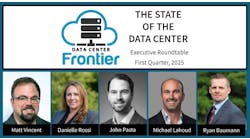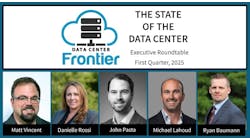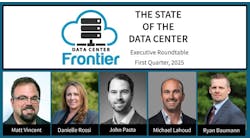Data Center Insights: Steven Carlini, Schneider Electric
The Data Center Frontier Executive Roundtable features insights from industry executives with lengthy experience in the data center industry. Here’s a look at the insights from Steven Carlini, Vice President of Innovation and Data Center for Schneider Electric.
With extensive global experience, Steven Carlini leads the Schneider Electric Energy Management BU’s Office of Innovation and Data Center Solutions, a team focused on spearheading Schneider’s data center, digital energy, and residential businesses.
In 2023, Steve was named to Capacity Media's Capacity POWER 100, a list of the “trailblazers, innovators and leaders driving the global digital infrastructure space.” In 2022, he joined the Forbes Technology Council. In 2020, he was named to Data Economy’s Future 100, the top 100 people to watch in the next decade. He is a member of the World Economic Forum’s 5G-Next Generation Networks Programme.
Results-oriented, Steven transforms ideas into products, solutions and systems. His areas of focus include innovation, AI, hydrogen, sustainability, 5G and 6G, cloud and edge computing, DCIM, BMS, and EPMS.
Data Center Frontier: As we close out the Fourth Quarter of 2024, how do you see regulatory and public pressures shaping the data center industry's ambitions vs. its realities?
Steven Carlini, Schneider Electric: Overall, we are in the most prolific growth era for data centers that dwarfs the previous growth era - the internet buildout. IT companies are in a race of sorts to build out accelerated compute capacity for AI as fast as they can while still considering their carbon neutral and net zero commitments.
Although the data center industry continues to increase use of carbon free power sources and funding the development of more carbon free sources, it has been the subject of mainstream public scrutiny. Data centers are also being recognized as the enabler for carbon reduction in industries like transportation, manufacturing and energy production and distribution.
Data Center Frontier: To what degree is data center site selection the North Star for construction and development stakeholders in terms of guiding decisions on power and cooling infrastructure?
Steven Carlini, Schneider Electric: Site selection criteria have evolved quite a bit due to grid power availability.
Before data center developers can receive a permit in most areas, they must show they have secured utility sources for power and water. In many cases they will be required to provide an environmental impact assessment that meets certain sustainability criteria, for example committing to a certain percentage of carbon free power or running their operations in a very efficient manner for electricity and water use.
Additionally, site selection in climates where they can take advantage of free cooling (even for AI clusters) has guided placement decisions. However, as more extreme density AI solutions are deployed, the lower liquid temperatures needed to cool the latest GPUs will necessitate active heat rejection and minimize the opportunity for any free cooling.
Data Center Frontier: What are the most pivotal sustainability considerations and actions for colocation and hyperscale data centers headed into 2025?
Steven Carlini, Schneider Electric: Sourcing and running on zero carbon sources are a primary goal going forward. As more zero carbon capacity is built, data center operators will be first in line.
Additionally, data center operators will collaborate with grid power providers to cooperate on supply and demand optimization. This means data center operators will strategically use on-site back up power sources – BESS (battery energy storage systems) to charge when being supplied with carbon free power and discharge when the grid is supplying fossil fuel-based power.
Data center operators are at different parts of their sustainability journeys. Those trying to comply with impending regulations are focused on data gathering and reporting. Once they have this, they can put action plans together to reduce carbon output and water use.
Those more advanced on their sustainability journey will focus on the supply chain and their providers to minimize their scope 3 emissions. This is a very large part of emissions for most companies and the most complicated to understand, report and mitigate.
Data Center Frontier: From your perspective, how is the massive build-out of AI infrastructure and its associated power demand impacting prospects for future data center investment and planning?
Steven Carlini, Schneider Electric: There has never been a time in history where investors have been aggressively backing new data center projects like today. Data center developers that have successfully negotiated access to low carbon grid power and have a resource-efficient data center design and detailed production plan have no trouble securing funding.
However, availability of grid power is limiting new construction and forcing data center developers to seek creative alternatives, including adding primary power on-site. Solutions like natural gas turbines are a proven technology today, but may not be the most environmentally friendly. Fuel cells are a possibility but optimally require green hydrogen that is not available at scale and at a reasonable cost. Nuclear SMRs (small modular reactors) are carbon-free but are in the very beginning of their development and will need to go through regulatory approval.

Matt Vincent
A B2B technology journalist and editor with more than two decades of experience, Matt Vincent is Editor in Chief of Data Center Frontier.





